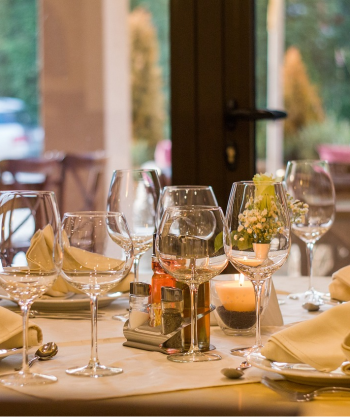Australia, a country known for its rich cultural heritage and diverse culinary traditions, offers a unique blend of food experiences, particularly in wedding celebrations. These gastronomic traditions are deeply ingrained in the Australian way of life and represent the spirit of unity, love, and togetherness.
From time-honoured recipes passed down to contemporary culinary trends, the food served at Australian weddings is a delectable testament to the country’s multicultural heritage.
Let’s explore some of the best Australian food traditions that make every wedding unforgettable in The Land Down Under.
The Influence of Indigenous Culture
Indigenous Australian culture profoundly influences wedding food traditions, which is beautifully reflected in the diverse wedding venues Brisbane has to offer. Besides Brisbane, some of the oldest wedding traditions are also alive in Moreton Bay, Townsville, and Cairns, among other places in Queensland, where 273,000 Aboriginals and Torres Strait Islanders live.
One of the most unique indigenous traditions is the smoking ceremony, often performed at these venues. Here, plants and herbs are burnt, and the smoke is fanned onto the wedding couple to honor the earth. Another indigenous tradition is the stone ceremony, which symbolizes unity and commitment.
In terms of food, a common meal at Australian weddings, especially those held at the vibrant wedding venues in Brisbane, is barbecue. This often features local favorites like prawns, lamb chops, and ‘snags’ (sausages). Traditional Aboriginal foods, such as the Australian witchetty grub, native to central Australia, may also be incorporated into the menu. So whether you’re planning a wedding or attending one, the wedding venues in Brisbane offer a unique blend of cultural heritage and culinary delight.
Modern Australian Wedding Food Traditions
Australia’s multicultural society is beautifully reflected in the modern wedding dishes.Here are some of the most popular food items in Australian wedding buffets today.
A Fusion of Flavours
The multicultural fabric of Australia shines through in the modern dishes served at weddings. A unique blend of traditional favourites with global cuisines creates an unforgettable culinary journey for guests.
From Italian pasta and Spanish tapas to Asian stir-fries, the menu is a gastronomic mosaic, celebrating the country’s diverse heritage. This fusion not only caters to various palates but also symbolises Australia’s inclusive society, making the wedding feast a truly multicultural affair.
The Quintessential “Aussie BBQ”
Nothing says ‘Australian celebration’ quite like a quintessential “Aussie BBQ.” A cherished tradition at many wedding receptions, it embodies Australia’s relaxed, friendly culture. The aroma of grilled snags (sausages), lamb chops, and steaks wafting through the air sets a welcoming tone for the festivities.
Paired with fresh salads and a cold beer, these barbecued delights offer guests a true taste of an Aussie celebration. The BBQ, a symbol of communal cooking and shared meals, adds a touch of homeliness and warmth to the grandeur of a wedding.
Maritime Delights
Given Australia’s extensive coastline, seafood is significant in wedding cuisine. Freshly caught fish, prawns, oysters, and lobsters not only add a luxurious touch to the feast but also pay homage to Australia’s maritime heritage.
Whether it’s a seafood platter served as a starter or main course dishes like grilled barramundi and lobster thermidor, these oceanic delicacies are a treat to the senses. The freshness of the produce, coupled with expert preparation, makes seafood a much-loved choice at Australian weddings, reflecting the country’s close ties with its surrounding waters.
Food Stations
A rising trend at Australian weddings is the inclusion of food stations. These dedicated counters serve a variety of cuisines, ranging from succulent sushi and mini burgers to spicy Mexican treats and decadent desserts.
This interactive dining experience allows guests to choose their preferred dishes, catering to diverse dietary preferences and tastes. It also adds a fun, engaging element to the reception, as guests can watch their food being prepared. Food stations, with their array of global flavours, add a dynamic, modern touch to Australian wedding feasts.
Traditional Treats
Despite the influx of global cuisines, traditional Australian favourites continue to charm. Lamingtons, for instance, are a common sight at wedding dessert tables. These sponge cakes, coated in chocolate and desiccated coconut, offer a sweet nod to Australia’s culinary history.
Similarly, topped with fresh fruits and cream, pavlovas are often served as a light and refreshing dessert. With their nostalgic appeal, these traditional treats contribute to the unique flavour profile of Australian weddings. They serve as a delicious reminder of the country’s rich culinary past, even as it embraces global influences.
Wine and Beverages
In Australian weddings, the beverage selection is as important as the food. The nation’s thriving wine industry plays a pivotal role in these celebrations. There are many Australian wineries known globally for their quality. A few of the best wines produced by these local wine factories are Shiraz and Chardonnay, which are bestsellers in weddings,
Each wine is carefully selected to pair with specific meals, enhancing the taste and creating a harmonious blend of flavours. For instance, a robust Cabernet Sauvignon might accompany a hearty steak, while a crisp Riesling could be paired with seafood.
Aside from wines, beers, both local brews and international favourites, are commonly served. Moreover, cocktails infused with native Australian ingredients are gaining popularity, adding a creative twist to the beverage menu. Non-alcoholic options, like sparkling water and fresh fruit juices, are also provided, ensuring a drink for every guest’s preference.
Takeaway
Food at Australian weddings is more than a meal. It’s an integral part of the celebration, symbolising love and unity. The diverse culinary traditions reflect Australia’s multicultural fabric, while carefully pairing food and wine enhances the overall experience. Most importantly, it’s a gastronomic celebration that embodies Australia’s warm hospitality and vibrant culture.



